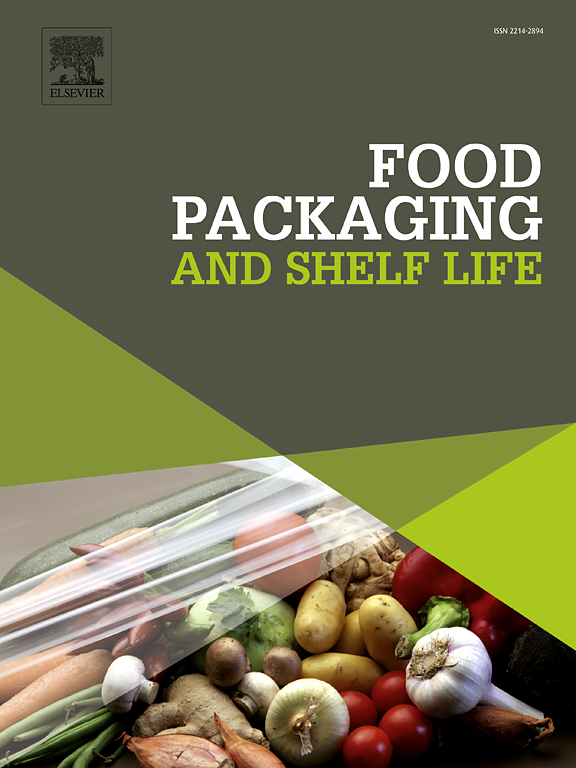Investigation on the protection ability of two commonly packaging methods to apples during express transportation
IF 8.5
1区 农林科学
Q1 FOOD SCIENCE & TECHNOLOGY
引用次数: 0
Abstract
Packaging plays a vital role in the post-harvest sales process of apples. This study conducted express transportation tests to evaluate the protective effectiveness of two commonly used packaging methods for apples. Key parameters assessed included real-time changes in temperature, humidity, vibration load, and CO₂ levels inside the packaging boxes during transit, as well as the storage quality of apples after transportation. Results showed significant variations in load distribution within corrugated partition-based cardboard boxes (CP combination packaging). Conversely, foam holder-based cardboard boxes (FP combination packaging) exhibited CO₂ accumulation. Furthermore, mechanical damage was predominantly localized to the fruit belly. Compared to CP combination packaging box, FP combination packaging box provided more stable shock resistance at lower vibration forces (< 10 N) across transit routes, likely due to its EPS foam design, which restricted fruit movement and absorbed external vibrations. Post-storage analysis showed that damaged apples experienced a 0.16 % increase in mass loss, a 0.83 % rise in soluble solids content (SSC), and a 0.19 MPa reduction in firmness compared to undamaged controls. These findings provide valuable insights into optimizing packaging design to minimize transport-induced damage and enhance apple preservation.
包装在苹果收获后的销售过程中起着至关重要的作用。本研究进行了快递运输测试,以评估两种常用苹果包装方法的保护效果。评估的主要参数包括运输过程中包装箱内温度、湿度、振动负荷和 CO₂ 水平的实时变化,以及运输后苹果的贮藏质量。结果表明,瓦楞隔板纸板箱(CP 组合包装)内的载荷分布变化很大。相反,基于泡沫支架的纸板箱(FP 组合包装)则表现出 CO₂ 积累。此外,机械损伤主要集中在果腹部位。与 CP 组合包装盒相比,FP 组合包装盒在较低的振动力(< 10 N)下提供了更稳定的抗冲击能力,这可能是由于其 EPS 发泡设计限制了水果的移动并吸收了外部振动。贮藏后分析表明,与未损坏的对照组相比,受损苹果的质量损失增加了 0.16%,可溶性固形物含量(SSC)上升了 0.83%,硬度降低了 0.19 兆帕。这些发现为优化包装设计以最大限度地减少运输引起的损坏和提高苹果的保鲜效果提供了宝贵的见解。
本文章由计算机程序翻译,如有差异,请以英文原文为准。
求助全文
约1分钟内获得全文
求助全文
来源期刊

Food Packaging and Shelf Life
Agricultural and Biological Sciences-Food Science
CiteScore
14.00
自引率
8.80%
发文量
214
审稿时长
70 days
期刊介绍:
Food packaging is crucial for preserving food integrity throughout the distribution chain. It safeguards against contamination by physical, chemical, and biological agents, ensuring the safety and quality of processed foods. The evolution of novel food packaging, including modified atmosphere and active packaging, has extended shelf life, enhancing convenience for consumers. Shelf life, the duration a perishable item remains suitable for sale, use, or consumption, is intricately linked with food packaging, emphasizing its role in maintaining product quality and safety.
 求助内容:
求助内容: 应助结果提醒方式:
应助结果提醒方式:


